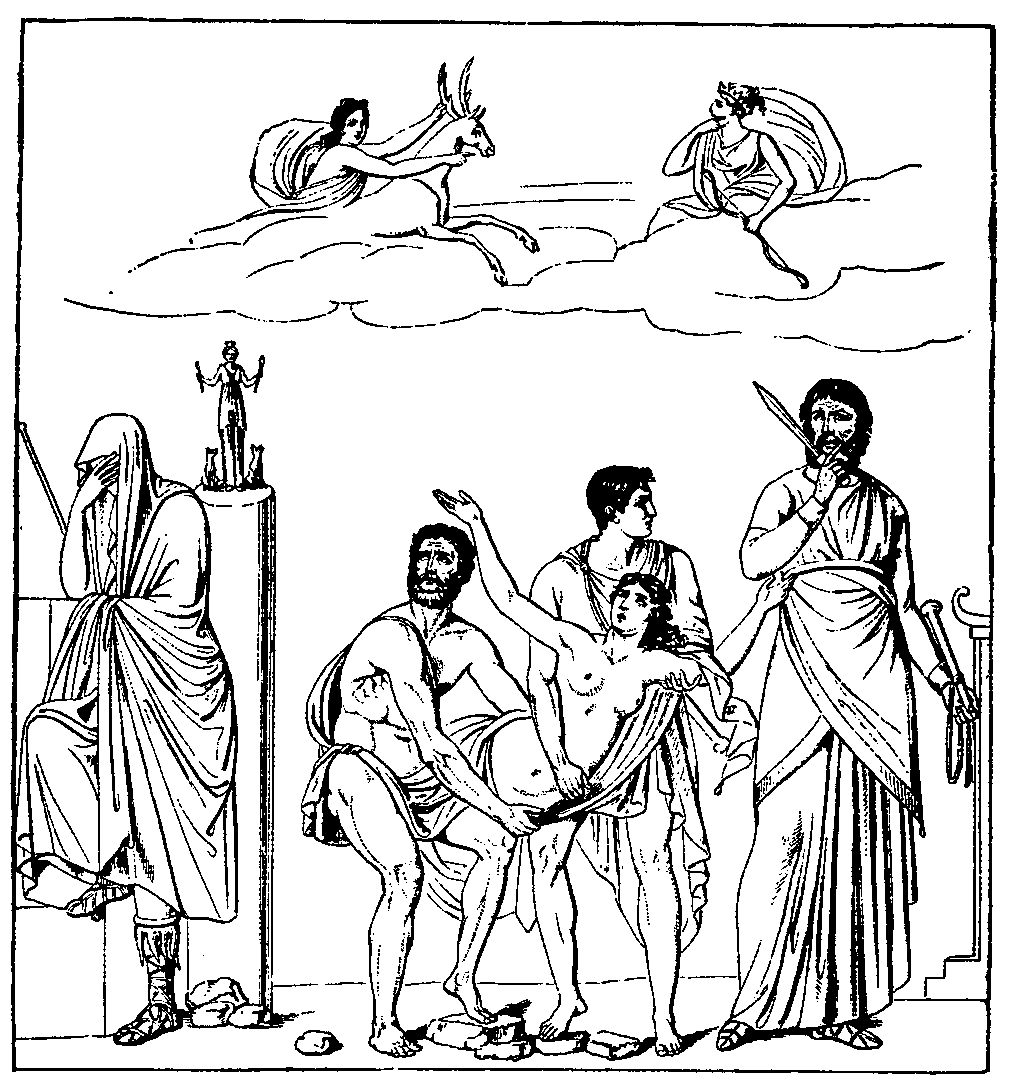|
Dictionary: Search the Dictionary Browse the Dictionary |
|
Timeline: Launch Interactive Timeline |
| Return to Front Page |
| IPHIGENIA | |
| Form: Gr. Iphigeneia, in Homer Iphianassa. | |
| Daughter of Agramemnon and of Clytaemnestra, or (according to another account) of Theseus and Helen (q.v.), and brought up Clytaemnestra as her child. When the Greek ships were detained at Aulis by the calm caused by the wrath of Artemis against Agamemnon for killing a hind sacred to that goddess, and boasting that he was superior to her in the chase, the seer Calchas announced that the goddess could only be appeased by the sacrifice of Iphigenia. According to another story, Agamemnon had vowed, before the birth of Iphigenia, that he would sacrifice to the goddess whatever the year brought forth that was loveliest, but had neglected to keep his vow. After a long struggle Agamemnon finally gave way to the pressure put upon him by Menelaus, and sent for his daughter to come to Aulis under the pretext of betrothing her to Achilles. During the sacrifice Artemis substituted a hind for her, and carried her off in a cloud to the land of the Tauri [the modern Crimea], where, as priestess of the goddess, it fell to her lot to offer up as victims all strangers who were shipwrecked on the coast. Orestes, who, commanded by the oracle, had gone there to bring to Attica the image of the goddess, was on the point of being sacrificed by her, when she recognised him as her brother and allowed herself to be carried off by him together with the image. At Delphi her sister Electra wanted to put her eyes out, on hearing that the Tauric priestess had slain Orestes; but was prevented from doing so by her brother's arrival. She is said to have brought the image of the Tauric Artemis to the Attic deme of Brauron, and to have died and been buried there as its priestess. She was even introduced into Attic legend as daughter of Theseus and Helen. In other places also, such as Sparta, the image was shown, and she was regarded as a priestess who had brought it to Greece from among the Scythians. In all probability Iphigenia was originally a designation of Artemis herself, and out of this epithet of the goddess the personality of the priestess was in time evolved. Her grave was also shown at Megara. According to another legend, she is said to have been made immortal by Artemis, and to have lived on in the island of Leuce as the wife of Achilles under the name of Orsilochia. | |
|
|
|
| Pictures and Media | |
| SACRIFICE OF IPHIGENIA. (Mural painting from Pompeii. Naples Museum) |

|
|
Copyright 2000-2020 Peter T. Struck. No portion of this site may be copied or reproduced, electronically or otherwise, without the expressed, written consent of the author. |